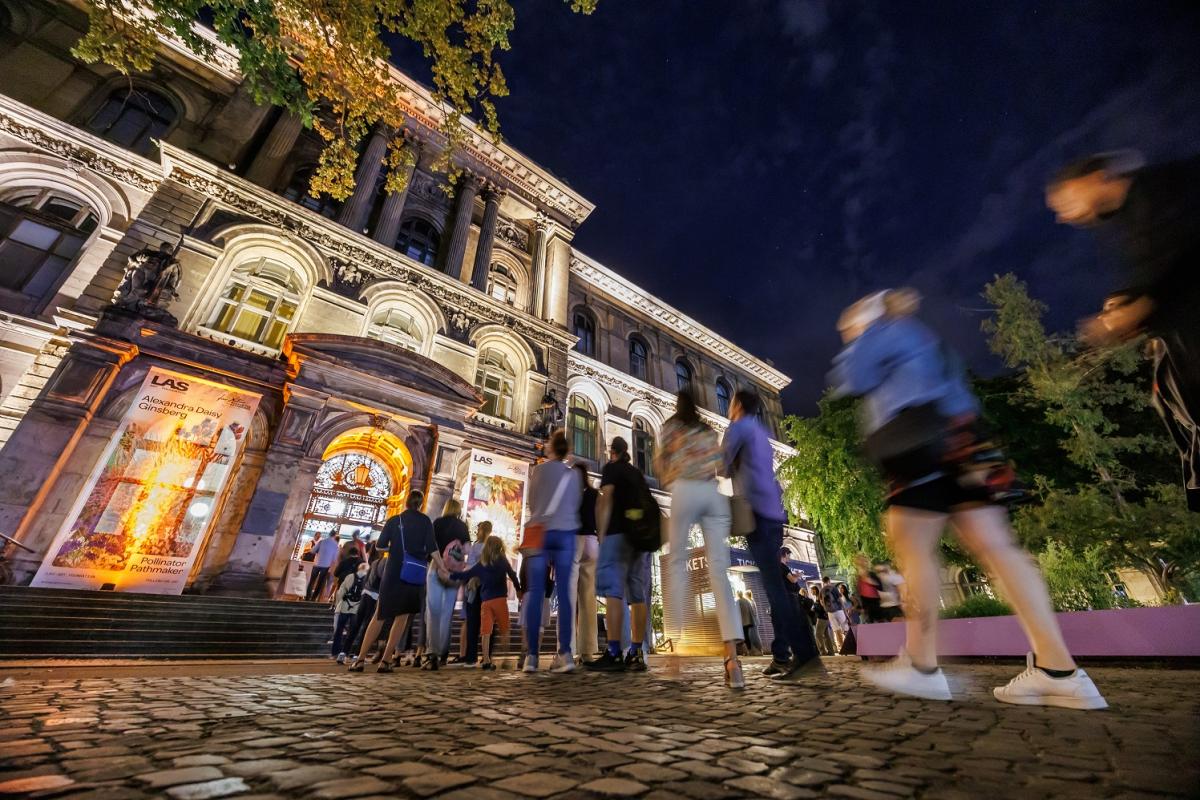The Lange Nacht der Museum on 24 August is all about "Berlin Secrets". The Museum für Naturkunde Berlin exploring objects hidden in stone, buried in amber and wrapped in file covers. In the Open Museum Studio, enigmatic and surprising museum artefacts can be discovered with your hands and explored under a microscope. Live speakers reveal one or two secrets in the exhibition and about Berlin originals. In an extraordinary atmosphere and with a drink under the dinosaur, the evening becomes an experience.
From the programme:
Discover Citizen Science - your way to help change the world! The choice of projects is huge - natural research or social issues, archival research or technical innovations? We show you exciting tools that you can use to make your own contribution to research.
Amber discoveries: 38 million years ago, mosquitoes and flies buzzed through amber forests. Some of them stuck to the sticky resin with their wings or legs. To the delight of fossil collectors, who present the treasures under a microscope. Of course, you can also polish an amber yourself!
Mineral and stone identification: amethyst, sphalerite or pyrope? If you also have a rock or mineral and would like to know what it is, we can help you identify it.
Guided tour of the Palaeontological Collection: Which underground train is used to hunt mammoths? What do you find when you dig at Potsdamer Platz? We present the most spectacular palaeozoological finds in Berlin and the surrounding area.
(A) glimpse into the transcription workshop - mysterious files, mysterious writings: Deciphering Uroma's handwriting is complicated. Researchers have the same problem with old letters or excursion diaries. We invite you to decipher old German manuscripts and the first pieces of writing are transcribed together.
When volunteers look into the spider's glass: Experience an exciting insight into the arachnid collection with all the 8-legged and mostly 8-eyed, unjustly disreputable, cute little animals and find out what a day's work in one of the largest arachnid collections in the world looks like.
Uranium discovery and new minerals - the collection of Martin Heinrich Klaproth (1743-1817): He discovered eight chemical elements - the best known being uranium. His collection of samples of element and mineral discoveries is now housed in the Naturkundemuseum Berlin.
Guided tour of the mammal skull collection: The mammal skull collection will have to be relocated in the next few years as the museum is gradually being renovated. You can find out how 80,000 skulls are moved and what the skulls tell us about their origins on a guided tour of the collection.
Secret specimens: Would you like to know why we consider museum specimens to be treasures? On our guided tour through the storage rooms of the mammal department, we show you some of our rarest and strangest objects. (The tour is in English).
How words become science - insights into the museum's library: classic natural history works with hand-coloured animal illustrations, views of volcanic eruptions, a historical map of the city of Berlin, works by the geologist Leopold von Buch, whose 250th birthday was celebrated this year - marvel and be surprised!
Natural history on celluloid. Films from the museum archive: More than 200 years of museum and natural history - including historical film material as well as files, maps, objects and photographs - can be found in the museum's archive. A film screening with commentary will give you an insight into historical views of animal research on the museum grounds.
The good time capsule: As the doomsday clock draws ever closer to midnight, it seems to be a question of when, not if, humanity will disappear into history. Join a team of comedians and scientists as they search for objects, ideas and inventions to be stored in a time capsule in order to survive the end of the world. But before that, please become part of our museum evolution! (This part of the programme is in English).
The complete programme and further information on the Long Night of Museums can be found here.
The programme content is in German, with the exception of the guided tour "Secret Specimen" and "The good time capsule", which are in English.
